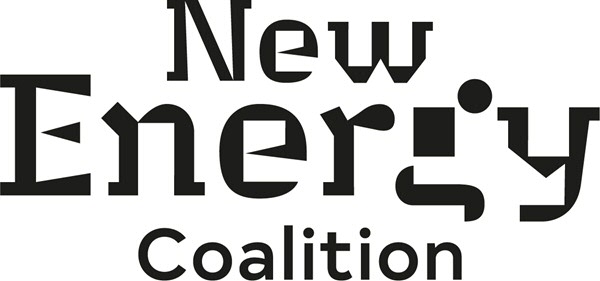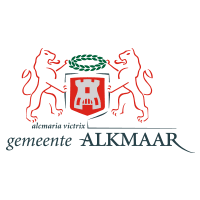'GREEN GAS HAS THE POTENTIAL TO COMPLETELY REPLACE NATURAL GAS IN THE FUTURE HOUSEHOLD ENERGY SUPPLY'
By now it is very much clear that our future homes will not be heated with natural gas. According to Gasunie, however, solar and wind energy alone will not be enough. Fortunately, other solutions are available as well. 'The remaining gas demand of future households could be completely replaced by green gas.'
15-05-2019 16:00 | BY: EMMA ROTMAN from Duurzaam Bedrijfsleven
When it comes to the energy transition, even though renewable electricity has taken off enormously in recent years, society does not yet seem fully convinced of the role of green gas. Gerard van Pijkeren, manager Gasunie New Energy, has an explanation for this. 'When we discuss sustainable energy in the Netherlands, we almost exclusively talk about electricity. This is mainly because the transition to solar and wind energy is clearly visible around us. However, the share of gas in the energy mix is much greater than that of electricity.'
The amount of green gas that has been produced annually so far is relatively small. In recent years, it has fluctuated around 100 million cubic metres, while the total natural gas consumption in the Netherlands is 30 to 35 billion annually. This brings the current share of green gas to around 0.3 percent. Households account for about a third of this. Nevertheless, Van Pijkeren states that in the future, green gas has the potential of meeting the gas demand of all households in the Netherlands.
15-05-2019 16:00 | BY: EMMA ROTMAN from Duurzaam Bedrijfsleven
When it comes to the energy transition, even though renewable electricity has taken off enormously in recent years, society does not yet seem fully convinced of the role of green gas. Gerard van Pijkeren, manager Gasunie New Energy, has an explanation for this. 'When we discuss sustainable energy in the Netherlands, we almost exclusively talk about electricity. This is mainly because the transition to solar and wind energy is clearly visible around us. However, the share of gas in the energy mix is much greater than that of electricity.'
The amount of green gas that has been produced annually so far is relatively small. In recent years, it has fluctuated around 100 million cubic metres, while the total natural gas consumption in the Netherlands is 30 to 35 billion annually. This brings the current share of green gas to around 0.3 percent. Households account for about a third of this. Nevertheless, Van Pijkeren states that in the future, green gas has the potential of meeting the gas demand of all households in the Netherlands.
GREEN GAS IS THE FUTURE
According to Van Pijkeren, we shouldn't look at present-day consumption. 'We should consider green gas as part of future energy solutions. The Netherlands will have to do its utmost to make the current heat supply in homes more sustainable; by insulating and installing heat pumps, for example. We estimate that the remaining gas demand for households will then be 2 to 3 billion cubic metres, instead of the current 10. This volume of green gas can already be achieved towards 2030. That will probably be before we have reduced household's demand for gas.'
Existing buildings in particular will benefit from this. New houses are designed in such a way that the demand for heat is reduced over time. An electric heat pump is a good example of this. However, for poorly insulated houses in inner cities and the countryside, such a pump cannot provide enough heat during colder periods. 'In these situations, a hybrid heat pump can be a good solution. Such a pump combines the benefits of an electric heat pump with a central heating boiler that runs on green gas,' explains Van Pijkeren.
Green gas benefits from the fact that it can directly take advantage of the existing gas infrastructure. 'If you want to heat every household with electricity, the electricity supply—after insulation of all homes—must be at least double what it is now. In contrast, the current natural gas network is perfectly suitable for green gas—plus consumers can keep their central heating boilers. We believe in solutions that involve acceptable social costs.'
Existing buildings in particular will benefit from this. New houses are designed in such a way that the demand for heat is reduced over time. An electric heat pump is a good example of this. However, for poorly insulated houses in inner cities and the countryside, such a pump cannot provide enough heat during colder periods. 'In these situations, a hybrid heat pump can be a good solution. Such a pump combines the benefits of an electric heat pump with a central heating boiler that runs on green gas,' explains Van Pijkeren.
Green gas benefits from the fact that it can directly take advantage of the existing gas infrastructure. 'If you want to heat every household with electricity, the electricity supply—after insulation of all homes—must be at least double what it is now. In contrast, the current natural gas network is perfectly suitable for green gas—plus consumers can keep their central heating boilers. We believe in solutions that involve acceptable social costs.'
FROM FERMENTATION TO GASIFICATION
At the same time, scaling up of green gas requires a change in production technology according to project leader Martijn Theelen of Gasunie New Energy. Green gas is currently mainly produced from waste fermentation. In this process, carbohydrates (sugars)—the fermentable part of biomass—are converted into energy. 'However, this is only 20 percent of the biomass. In fact, this technology is only sustainable if the remaining 80 percent of biomass is also used. For example, for producing animal feed from fermented grass juice. Or alternatively, if the residual flows are used as digestate (fermented biomass, Ed.) or fertilisers.'
In order to increase efficiency and scale up green gas volumes, Gasunie is working together with SCW Systems on a technology referred to as supercritical water gasification. The prototype reactor and first reactor for the demo installation at Energy Innovation Park in Alkmaar have already run more than a thousand test hours combined.
In order to increase efficiency and scale up green gas volumes, Gasunie is working together with SCW Systems on a technology referred to as supercritical water gasification. The prototype reactor and first reactor for the demo installation at Energy Innovation Park in Alkmaar have already run more than a thousand test hours combined.
PRESSURE COOKER
Theelen compares this approach to a pressure cooker. 'Pressure cookers allow one to bring water to a temperature above 100 degrees at high pressure, without it evaporating. Thanks to our collaboration with SCW, we can apply a similar method on a large scale. At a pressure of 221 bar, water remains liquid up to 374 degrees. If you allow the pressure, temperature, or both to rise even further, the water will reach a super critical phase.'
In this phase, wet biomass, such as sewage sludge, splits into methane, hydrogen, and CO2. 'And methane is of course the main component of natural gas. Instead of the 20 percent via fermentation, this technology allows us to convert 100 percent of wet biomass into molecules,' explains Theelen. These molecules are subsequently processed into green gas, with the exact same components and quality as natural gas.
In this phase, wet biomass, such as sewage sludge, splits into methane, hydrogen, and CO2. 'And methane is of course the main component of natural gas. Instead of the 20 percent via fermentation, this technology allows us to convert 100 percent of wet biomass into molecules,' explains Theelen. These molecules are subsequently processed into green gas, with the exact same components and quality as natural gas.
NO PROMINENT ROLE IN CLIMATE AGREEMENT
With this new gasification technology and ample supply of wet biomass, large-scale generation of green gas is certainly conceivable. Nevertheless, green gas currently does not prominently feature in the government's climate agreement. 'Our ambitions go far beyond what has been presented in the calculations of the Netherlands Environmental Assessment Agency,' Van Pijkeren says. 'Looking at the past, to what was possible then, it may seem logical. However, we're now at a breaking point and have the opportunity to make huge short-term progress. It's unfortunate that this is still insufficiently acknowledged.'
By demonstrating that it is possible to produce volume relatively quickly, SCW System and Gasunie hope to further highlight the opportunities of green gas. In addition, together with companies including TNO, ECN, an Engie, Gasunie also participates in Stichting Groen Gas Nederland to put new technologies into practice.
By demonstrating that it is possible to produce volume relatively quickly, SCW System and Gasunie hope to further highlight the opportunities of green gas. In addition, together with companies including TNO, ECN, an Engie, Gasunie also participates in Stichting Groen Gas Nederland to put new technologies into practice.
MOMENTUM
Technological development is extremely important towards exploiting the full potential of green gas. 'We're currently proving that gasification technologies are available and reliable for large-scale production. When it comes to financiers, this is an important precondition,' explains Theelen. SCW was able to perform their pilot thanks to a subsidy from the RVO and an investment from Gasunie. However, major energy suppliers first want to see the installation running successfully for a certain period of time.
'Once we can prove that, green gas will definitely gain momentum. In addition, suppliers will be able to sell their wet biomass and buyers will be able to acquire green gas. As soon as we reach this stage, it will no longer be a question whether we will reach 2 to 3 billion cubic metres of green gas before 2030, but when.'
'Once we can prove that, green gas will definitely gain momentum. In addition, suppliers will be able to sell their wet biomass and buyers will be able to acquire green gas. As soon as we reach this stage, it will no longer be a question whether we will reach 2 to 3 billion cubic metres of green gas before 2030, but when.'
Address
Diamantweg 38
1812 RC Alkmaar
The Netherlands
Contact
Peter Simões
Directeur InVesta
+31 (0)6 270 33 412
info@investa.org










